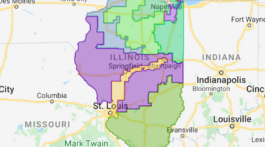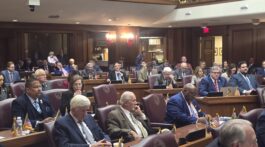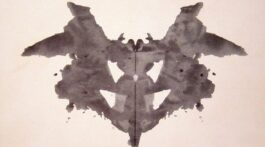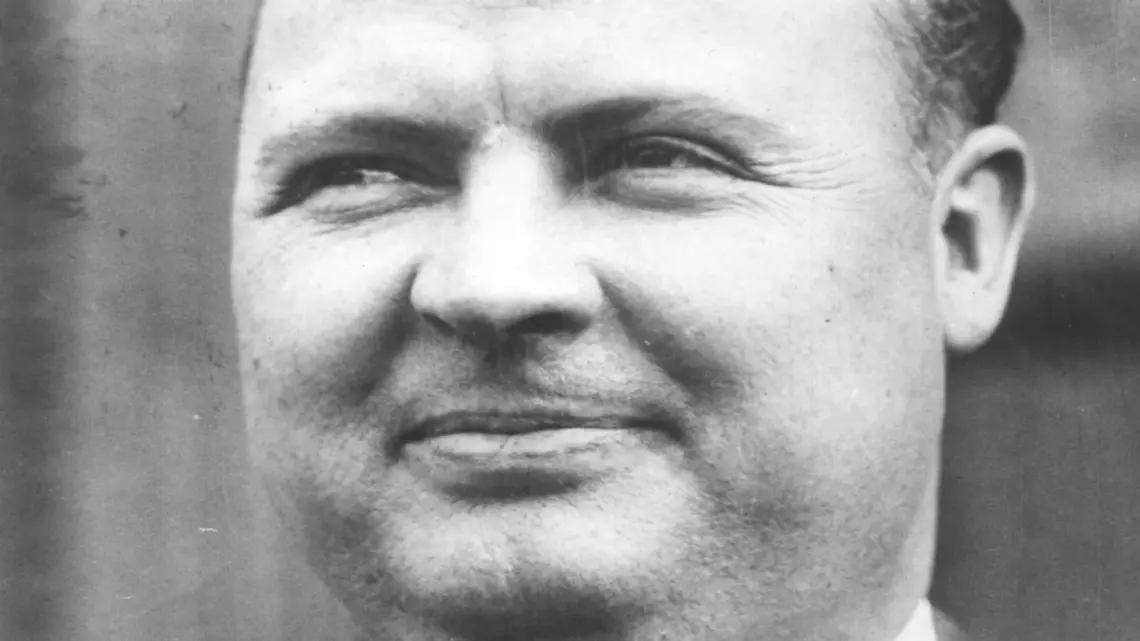By Abdul-Hakim Shabazz, Esq.
Let’s be real: Rod Bray and Todd Huston are not stupid men. They’ve been in Indiana politics long enough to know how precincts work, how coalitions behave, and how a bad idea can set off a five-alarm fire before lunch. Which is why the loudest proponents of this mid-cycle redistricting push look even more unserious — because while they pound the table insisting we need a shiny new 9–0 congressional map to “help Trump,” anyone with a functioning calculator knows that 7–2 is already more than enough for a state he’s carried twice by landslides.
The notion that Donald Trump’s political survival hinges on squeezing out two more Republicans from Indiana is so ridiculous it should come with a laugh track. Nobody actually believes that, including the people pretending to. But the part they seem determined to ignore — or simply hope no one notices — is the unavoidable reality that their “perfect map” just so happens to dismantle the one congressional district capable of electing Indiana’s only Black member of Congress. Because yes, eliminating the lone Black congressional seat in a state that once housed the national headquarters of the Ku Klux Klan is definitely the kind of “great optics” every grown-up political strategist dreams about.
And since we’re talking about optics, let’s talk about history — because Indiana has been down this road before, and it was ugly. A century ago, D.C. Stephenson, the Grand Dragon of the Ku Klux Klan, wasn’t just running a hate group; he was practically running Indiana. By the mid-1920s, Stephenson had the governor, members of the legislature, and a good portion of local governments wrapped around his authoritarian little finger. Nearly a third of Indiana’s white male population proudly wore the hood, and public policy was crafted with the explicit purpose of marginalizing and disempowering Black Hoosiers, immigrants, Catholics, Jews, and anyone else the Klan found inconvenient. Indiana has spent the better part of a century trying, often clumsily, to distance itself from that stain.
And let me be absolutely clear here: I’m not calling anybody racist. I’m not assigning motives. I’m not pretending to read minds. What I am saying — what any reasonable person could say — is that the outcome sure looks like something we’ve seen before in this state. I’m not naming it. I don’t have to. When you take Indiana’s only Black congressional district off the map, the optics write their own headline.
So it’s more than a little rich that some folks now want us to pretend that gutting the only district where Black voters have meaningful influence is just a coincidence — a happy little math accident occurring at the exact moment a handful of hyperpartisan activists are trying to force the legislature into engineering a partisan fantasy map no serious strategist needs. If we don’t study history, we will repeat it. That’s not woke; that’s not partisan; that’s literally Chapter One of every history textbook. I genuinely wonder if Rod and Todd were history majors, because if they were, they’re hearing alarm bells in their sleep.
But the proponents keep insisting — loudly, repeatedly, and with impressive delusion — that this is all about getting to “9–0 for Trump.” Sure. And D.C. Stephenson was just a “civic leader with strong organizational skills.” You can swear there’s no racial intent until you’re blue in the face, but when the real-world consequence of your map is that Indiana magically goes from one Black congressional district to zero, the rest of the country doesn’t need to subpoena your inbox to understand how that looks — especially coming from a state where racial ghosts don’t even bother waiting for Halloween to appear. Eliminating Black political representation — whether intentionally, accidentally, or through sheer policy incompetence — still eliminates Black political representation. Voters don’t interpret outcomes through legislative intent; they interpret outcomes through results.
And here’s the result: a vote for this map is a vote that — and let’s note, no one has even seen the map yet; didn’t Nancy Pelosi once say we have to vote for the bill so we can find out what’s in it? — will be interpreted, fairly, predictably, and loudly, as a step backward. It’s a vote that weakens minority representation. It’s a vote that dredges up the worst ghosts of Indiana’s past. It’s a vote that tells Black Hoosiers, implicitly or explicitly, that their voice is negotiable. Bray and Huston know better. Most lawmakers know better. Anyone who has read even the Wikipedia version of Indiana’s history knows better. But if the proponents get their way, the interpretation won’t just be predictable — it’ll be deserved. You cannot dismantle the state’s only Black congressional district and then act stunned when people call it what it looks like. You cannot pretend Indiana’s Klan-era legacy doesn’t exist simply because it’s inconvenient to your talking points. And you cannot wrap a regressive outcome in the American flag and call it “helping Trump.”
Indiana has come too far — and taken too long — to let a handful of political arsonists drag us backward into a ditch we spent a century climbing out of. If lawmakers want to avoid repeating the mistakes of 1925, they might try remembering them.
Abdul-Hakim is the editor and publisher of Indy Politics. He is also an attorney licensed in Illinois and Indiana.











